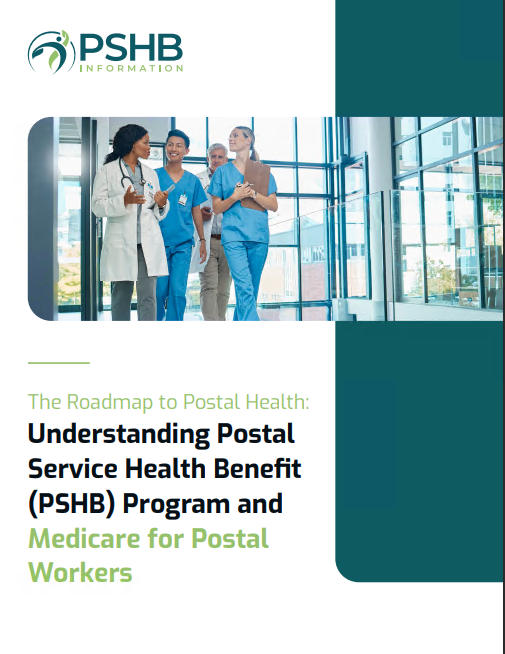Key Takeaways:
-
PSHB plans cater specifically to postal workers and their families, addressing unique healthcare needs through tailored benefits and coverage options.
-
With the shift from FEHB to PSHB, it’s essential to understand plan structures, timelines, and how integration with Medicare impacts your coverage.
A New Era in Postal Worker Healthcare
The Postal Service Health Benefits (PSHB) Program introduces a fresh approach to healthcare coverage for postal workers and their dependents. As of 2025, this program replaces the Federal Employees Health Benefits (FEHB) Program for USPS employees, retirees, and their eligible family members. With its tailored coverage, PSHB aims to address the unique demands of postal workers while providing peace of mind for their families. Whether you’re currently employed, retired, or nearing retirement, understanding how PSHB meets your needs can make a big difference in your healthcare decisions.
Why PSHB Plans Stand Out
PSHB plans are designed with the specific lifestyle and challenges of postal workers in mind. Unlike the broader FEHB options, PSHB caters exclusively to USPS employees and retirees, allowing for a more focused and relevant range of benefits.
Customization for a Unique Workforce
Postal workers face unique demands, including physically demanding jobs, irregular schedules, and exposure to varying conditions. PSHB plans consider these factors by offering:
-
Comprehensive preventive care to address job-related health risks.
-
Flexible access to healthcare providers, making it easier to find care that fits unpredictable schedules.
-
Lower-cost options for in-network services, helping to manage expenses over time.
Family-Centered Benefits
Your family’s health is just as important as your own. PSHB plans provide robust coverage for dependents, ensuring that everyone has access to essential care. This includes services like pediatric care, maternity coverage, and wellness programs tailored to family needs.
Coverage Basics You Should Know
PSHB coverage is structured to simplify healthcare for postal workers and their families. Here’s what you need to know about its components:
Biweekly Premium Contributions
While the government contributes approximately 70% of your premium, you’ll cover the remaining portion. The contribution amount varies depending on your selected plan and coverage type (Self Only, Self Plus One, or Self and Family).
Deductibles and Copayments
PSHB plans feature varying deductibles and copayment amounts, depending on whether you choose a low-deductible or high-deductible plan. Knowing these details can help you estimate your out-of-pocket costs for common services like doctor visits or prescriptions.
Coinsurance Rates
Coinsurance percentages apply to certain medical services, particularly for out-of-network providers. Generally, in-network coinsurance is lower, saving you money when you stick with network-approved providers.
Integration with Medicare for Retirees
If you’re a retiree enrolled in Medicare Part B, PSHB plans coordinate with Medicare to provide comprehensive coverage. This integration offers significant cost-saving opportunities, such as:
-
Reduced deductibles and copayments.
-
Lower out-of-pocket costs for prescription drugs under Medicare Part D Employer Group Waiver Plans (EGWP).
-
Expanded coverage for specialized care, such as hospital stays or skilled nursing facilities.
Enrollment Requirements for Medicare-Eligible Annuitants
Medicare-eligible retirees and their family members must enroll in Medicare Part B to maintain PSHB coverage. Exceptions apply for those who retired before January 1, 2025, or reached age 64 before this date.
Timeline for PSHB Enrollment
Transitioning to PSHB coverage requires attention to specific timelines. Missing these deadlines could impact your health benefits, so staying informed is crucial.
Open Season Dates
Each year, Open Season runs from mid-November to mid-December. This is your opportunity to:
-
Choose a new PSHB plan.
-
Add or remove eligible family members from your coverage.
-
Make adjustments to your current benefits.
Special Enrollment Periods (SEP)
Life events like marriage, the birth of a child, or loss of other health coverage can trigger a Special Enrollment Period. During these times, you’ll have 60 days to make changes to your PSHB plan.
Understanding Cost Structures
Healthcare expenses can add up, but knowing how PSHB plans handle costs can help you manage your budget effectively.
Out-of-Pocket Maximums
PSHB plans cap your out-of-pocket costs, ensuring that you won’t pay more than a certain amount annually for covered services. In 2025, the in-network maximums are $7,500 for Self Only and $15,000 for Self Plus One and Self and Family plans.
Prescription Drug Costs
A standout feature for 2025 is the $2,000 cap on out-of-pocket prescription drug expenses under Medicare Part D. Once you hit this cap, your plan covers 100% of your drug costs for the rest of the year.
Key Benefits Tailored to Postal Workers
PSHB plans go beyond basic coverage to include supplemental benefits that address the needs of postal employees.
Preventive Care and Wellness Programs
Preventive care is essential for a workforce that’s always on the go. PSHB plans include:
-
Regular checkups and screenings at no additional cost.
-
Wellness incentives, like gym membership discounts or weight management programs.
Mental Health and Support Services
Long hours and high-stress environments can take a toll on mental health. PSHB plans offer access to counseling, stress management programs, and behavioral health specialists.
Coverage for Specialized Services
Postal workers often face physical demands that may lead to injuries. PSHB plans include coverage for:
-
Physical therapy and rehabilitation.
-
Occupational therapy.
-
Chiropractic care to address work-related strain.
Steps to Maximize Your PSHB Benefits
Making the most of your PSHB plan involves understanding your options and staying proactive about your healthcare.
Review Your Annual Notice of Change (ANOC)
Each year, you’ll receive an Annual Notice of Change that outlines updates to your plan. Be sure to review this document carefully to understand changes to premiums, deductibles, or benefits.
Use In-Network Providers
Sticking with in-network providers reduces your out-of-pocket costs and ensures you get the most value from your plan.
Take Advantage of Supplemental Benefits
Don’t overlook the additional benefits offered by PSHB plans, such as dental and vision coverage. These can save you money on essential services.
The Role of Dependents in Your Coverage
Your dependents play a significant role in your healthcare decisions. PSHB plans offer robust options for covering your spouse and children, with benefits like:
-
Preventive care for kids, including immunizations and checkups.
-
Maternity coverage and family planning resources.
-
Mental health support for family members.
Staying Informed About Your Healthcare Options
Understanding PSHB plans isn’t a one-time task—it requires staying updated on changes and actively managing your coverage. By doing so, you can ensure your healthcare plan continues to meet your needs, no matter how your circumstances evolve.
PSHB’s Focus on Postal Worker Wellbeing
The PSHB Program represents a significant shift in how USPS employees and retirees manage their healthcare. By tailoring benefits to the unique challenges of postal work, PSHB ensures that you and your family have access to the care you need, when you need it. Take the time to review your options and make informed decisions—your health depends on it.








